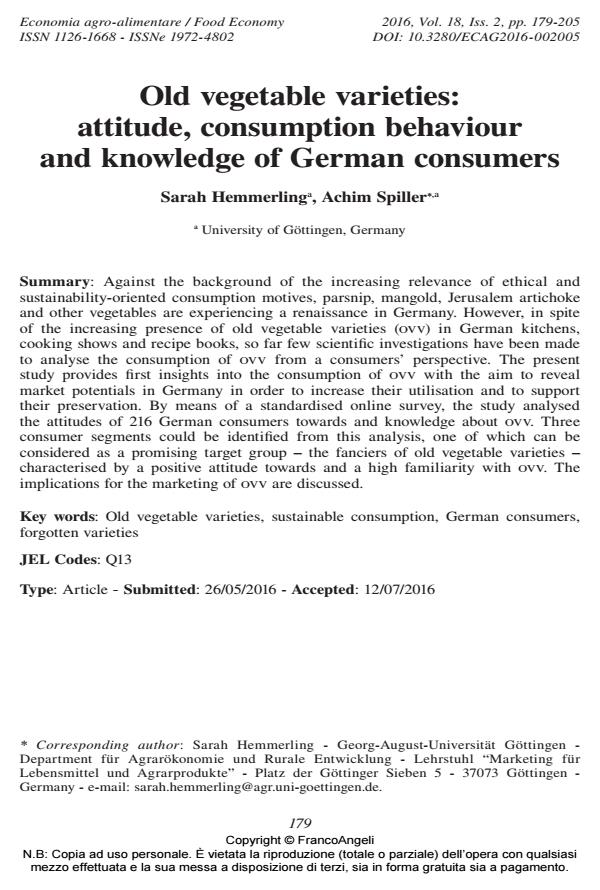Old vegetable varieties: attitude, consumption behaviour and knowledge of German consumers
Titolo Rivista ECONOMIA AGRO-ALIMENTARE
Autori/Curatori Sarah Hemmerling, Achim Spiller
Anno di pubblicazione 2016 Fascicolo 2016/2
Lingua Inglese Numero pagine 26 P. 179-204 Dimensione file 195 KB
DOI 10.3280/ECAG2016-002005
Il DOI è il codice a barre della proprietà intellettuale: per saperne di più
clicca qui
Qui sotto puoi vedere in anteprima la prima pagina di questo articolo.
Se questo articolo ti interessa, lo puoi acquistare (e scaricare in formato pdf) seguendo le facili indicazioni per acquistare il download credit. Acquista Download Credits per scaricare questo Articolo in formato PDF

FrancoAngeli è membro della Publishers International Linking Association, Inc (PILA)associazione indipendente e non profit per facilitare (attraverso i servizi tecnologici implementati da CrossRef.org) l’accesso degli studiosi ai contenuti digitali nelle pubblicazioni professionali e scientifiche
Against the background of the increasing relevance of ethical and sustainability-oriented consumption motives, parsnip, mangold, Jerusalem artichoke and other vegetables are experiencing a renaissance in Germany. However, in spite of the increasing presence of old vegetable varieties (ovv) in German kitchens, cooking shows and recipe books, so far few scientific investigations have been made to analyse the consumption of ovv from a consumers’ perspective. The present study provides first insights into the consumption of ovv with the aim to reveal market potentials in Germany in order to increase their utilisation and to support their preservation. By means of a standardised online survey, the study analysed the attitudes of 216 German consumers towards and knowledge about ovv. Three consumer segments could be identified from this analysis, one of which can be considered as a promising target group - the fanciers of old vegetable varieties - characterised by a positive attitude towards and a high familiarity with ovv. The implications for the marketing of ovv are discussed.
Parole chiave:Old vegetable varieties, sustainable consumption, German consumers, forgotten varieties
Jel codes:Q13
- “For More Diversity, Better Taste and My Own Health” Exploring Organic Consumers’ Purchasing Motives for Heirloom Vegetable Varieties Josephine Lauterbach, Christina Bantle, in Sustainability /2022 pp.4068
DOI: 10.3390/su14074068
Sarah Hemmerling, Achim Spiller, Old vegetable varieties: attitude, consumption behaviour and knowledge of German consumers in "ECONOMIA AGRO-ALIMENTARE" 2/2016, pp 179-204, DOI: 10.3280/ECAG2016-002005